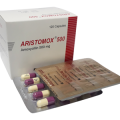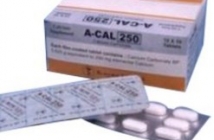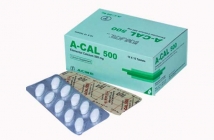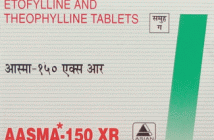Home / Categories / APIMOX-500MG

APIMOX-500MG
(10)
AMOXYCILLIN-500MG
ANTIMICROBIALS-BETA LACTAM(W/WO CLAVULANIC ACID)
APEX PHARMA
Product Details
Facts
Amoxicillin
Action
Indications
Contraindications
Route/Dosage
Interactions
Lab Test Interferences
Adverse Reactions
PrecautionsPatient Care Considerations
Administration/Storage
Assessment/Interventions
Patient/Family Education
(uh-MOX-ih-sil-in)AmoxilTablets, chewable: 200 mg (as trihydrate), 400 mg (as trihydrate)Tablets: 500 mg (as trihydrate), 875 mg (as trihydrate)Capsules: 250 mg (as trihydrate), 500 mg (as trihydrate)Powder for oral suspension: 125 mg/5 mL (as trihydrate) when reconstitued, 200 mg/5 mL (as trihydrate) when reconstituted, 250 mg/5 mL (as trihydrate) when reconstituted, 400 mg/5 mL (as trihydrate) when reconstitutedAmoxil Pediatric DropsPowder for oral suspension: 50 mg/mL (as trihydrate) when reconstitutedTrimoxTablets, chewable: 125 mg (as trihydrate), 250 mg (as trihydrate)Capsules: 250 mg (as trihydrate), 500 mg (as trihydrate)Powder for oral suspension: 125 mg/5 mL (as trihydrate) when reconstituted, 250 mg/5 mL (as trihydrate) when reconstitutedAPO-Amoxi, Lin-Amnox, NovamoxinNu-Amoxi, Pro-AmoxClass: Antibiotic/Penicillin
 Action Inhibits bacterial cell wall mucopeptide synthesis.
Action Inhibits bacterial cell wall mucopeptide synthesis.
 Indications Treatment of ear, nose, throat, GU, skin and skin structure, lower respiratory tract, and acute uncomplicated gonorrhea infections caused by susceptible strains of specific organisms.
Indications Treatment of ear, nose, throat, GU, skin and skin structure, lower respiratory tract, and acute uncomplicated gonorrhea infections caused by susceptible strains of specific organisms.
 Contraindications Hypersensitivity to penicillins, cephalosporins, or imipenem. Not used to treat severe pneumonia, empyema, bacteremia, pericarditis, meningitis, and purulent or septic arthritis during acute stage.
Contraindications Hypersensitivity to penicillins, cephalosporins, or imipenem. Not used to treat severe pneumonia, empyema, bacteremia, pericarditis, meningitis, and purulent or septic arthritis during acute stage.
 Route/Dosage
Route/Dosage
Ear, Nose, Throat, Skin And Skin Structure, GU Tract Infections
ADULTS AND CHILDREN WEIGHING AT LEAST 40 KG: PO Mild to moderate infections: 500 mg q 12 hr or 250 mg q 8 hr. Severe infections: 875 mg q 12 hr or 500 mg q 8 hr. CHILDREN (OLDER THAN 3 MO AND WEIGHING LESS THAN 40 KG): PO Mild to moderate infections: 25 mg/kg/day in divided doses q 12 hr or 20 mg/kg/day in divided doses q 8 hr. Severe infections: 45 mg/kg/day in divided doses q 12 hr or 40 mg/kg/day in divided doses q 8 hr.
Lower Respiratory Tract Infections
ADULTS AND CHILDREN WEIGHING AT LEAST 40 KG: PO 875 mg q 12 hr or 500 mg q 8 hr. CHILDREN (OLDER THAN 3 MO AND WEIGHING LESS THAN 40 KG): PO 45 mg/kg/day in divided doses q 12 hr or 40 mg/kg/day in divided doses q 8 hr.
Acute, Uncomplicated Gonorrhea
ADULTS: PO 3 g as a single dose. PREPUBERTAL CHILDREN (2 YR AND OLDER): 50 mg/kg amoxicillin combined with 25 mg/kg probenecid as a single dose.
 Interactions
Interactions
Contraceptives, oral: May reduce efficacy of oral contraceptives. Tetracyclines: May impair bactericidal effects of amoxicillin.
 Lab Test Interferences May cause false-positive urine glucose test results with Benedict's Solution, Fehling's Solution, or Clinitest tablets (enzyme-based tests, eg, Clinistix, Tes-Tape, are recommended); false-positive direct Coombs' test result in certain patient groups; false-positive protein reactions with sulfosalicylic acid and boiling test, acetic acid test, biuret reaction and nitric acid test (bromphenol blue test, Multi-Stix, is recommended).
Lab Test Interferences May cause false-positive urine glucose test results with Benedict's Solution, Fehling's Solution, or Clinitest tablets (enzyme-based tests, eg, Clinistix, Tes-Tape, are recommended); false-positive direct Coombs' test result in certain patient groups; false-positive protein reactions with sulfosalicylic acid and boiling test, acetic acid test, biuret reaction and nitric acid test (bromphenol blue test, Multi-Stix, is recommended).
 Adverse Reactions
Adverse Reactions
CNS: Dizziness; fatigue; insomnia; reversible hyperactivity. DERM: Urticaria; maculopapular to exfoliative dermatitis; vesicular eruptions; erythema multiforme; skin rashes. EENT: Itchy eyes; glossitis; stomatitis; sore or dry mouth or tongue; black “hairy” tongue; abnormal taste sensation; laryngospasm; laryngeal edema. GI: Gastritis; anorexia; nausea; vomiting; abdominal pain or cramps; epigastric distress; diarrhea or bloody diarrhea; rectal bleeding; flatulence; enterocolitis; pseudomembranous colitis. GU: Interstitial nephritis (eg, oliguria, proteinuria, hematuria, hyaline casts, pyuria); nephropathy; vaginitis. HEMA: Anemia; hemolytic anemia; thrombocytopenia; thrombocytopenic purpura; eosinophilia; leukopenia; granulocytopenia; neutropenia; bone marrow depression; agranulocytosis; reduced hemoglobin or hematocrit; prolonged bleeding and prothrombin time; increased or decreased lymphocyte count; increased monocytes, basophils, platelets. HEPA: Transient hepatitis; cholestatic jaundice. META: Elevated serum alkaline phosphatase and hypernatremia; reduced serum potassium, albumin, total proteins, and uric acid. OTHER: Hyperthermia.
 Precautions
Precautions
Pregnancy: Category B. Lactation: Excreted in breast milk. Hypersensitivity: Reactions range from mild to life threatening. Use cautiously in cephalosporin-sensitive patients because of possible cross-allergenicity. Streptococcal infections: Min 10 days required for effective treatment. Superinfection: May result in overgrowth of nonsusceptible bacterial or fungal organisms.
PATIENT CARE CONSIDERATIONS
 Administration/Storage
Administration/Storage
- Use liquid preparations for patients with swallowing difficulties. Shake liquid preparations well before using.
- Time doses for equal distribution throughout day to achieve optimal blood levels.
- Be certain chewable tablets are crushed or chewed before swallowing. Supply water after each dose.
- Refrigerate liquid preparations as indicated after reconstitution. Discard after 14 days. Use tight lid to avoid evaporation of moisture.
 Assessment/Interventions
Assessment/Interventions
- Obtain patient history, including drug history and any known allergies.
- Review results of culture and sensitivity testing as available.
- Monitor patient closely for several hours after administering first dose even when there is no history of allergy. Notify health care provider of any signs of potential hypersensitivity or anaphylactic reaction.
- Monitor renal and GI function. Notify health care provider of severe GI distress.
OVERDOSAGE: SIGNS & SYMPTOMS Hyperexcitability, convulsions
 Patient/Family Education
Patient/Family Education
- Instruct patient to time doses evenly over a 24-hr period.
- Inform patient that the medication works best on empty stomach but may be taken with food if there is GI upset.
- Instruct patient to increase fluid intake to 2000 to 3000 mL/day unless contraindicated.
- Advise patient to discard oral liquid preparations that are more than 14 days old.
- If therapy is changed because of allergic reaction, explain significance of penicillin allergy and inform patient of potential sensitivity to cephalosporins.
- Instruct patient to report the following symptoms to health care provider: rash, difficulty breathing.
Books@Ovid
Copyright © 2003 Facts and Comparisons
David S. Tatro
A to Z Drug Facts






